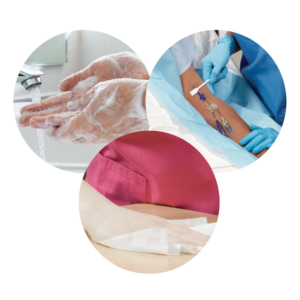Interventional Care


We notice that you are visiting us from . This site only services US-based visitors. Would you like to visit the site that is appropriate for your location?

HAIs are challenging, costly and difficult to prevent. They can be transmitted through both surfaces and hands, which means facilities need focus on fostering an [overall] cleaner environment. Adopting a comprehensive, layered approach, which includes traditional hard-surface disinfection with total room terminal disinfection, as well as education, training and clinical support, is key to helping prevent the spread of germs.
Author: Sean Gallimore, Senior Vice President, General Manager, PDI Healthcare
Source: Healthcare Business Today
Excerpt from the article:
“In today’s modern, high-tech hospitals and healthcare facilities, there are hand-sanitizer stations around every corner, gloves on nearly every hand, and standardized, top-to-bottom cleaning procedures. Healthcare professionals are using wipes, sprays, detergents and other cleaning products. Equipment, rooms and surgical procedures are undergoing strict cleaning and sterilization protocols. Yet, each year, there are an estimated 687,000 hospital-associated infections (HAIs), resulting in associated 72,000 deaths and costing an estimated $11 million annually, according to the Center for Disease Control (CDC). Although there has been significant progress with new innovations and products in infection prevention, more needs to be done. Today, healthcare care environments need to embrace a more integrated, holistic approach.
“HAIs are pervasive: With the constant influx and turnover of patients and a multitude of infectious agents common in healthcare facilities, HAIs are, without a doubt, challenging and costly. They are both difficult to prevent due to their persistent, communicable nature — and tough to treat given the rise of drug-resistant microorganisms. HAIs have many sources — they can be transmitted through surfaces (including floors, counters and linens), hands of the healthcare worker, a patient’s own skin, catheters and equipment. Furthermore, growing evidence indicates that the environment contributes to disease transmission and infections. The prevalence and complexities of HAIs require facilities to focus on fostering a cleaner environment overall. Adopting a comprehensive, layered approach, which includes the combination of traditional hard-surface disinfection with total room terminal disinfection, is key.”
Healthcare Business Today’s audience is an exclusive network of leaders at the country’s top healthcare companies, reaching more than 20,000 monthly website visitors and over 5,000 email subscribers including healthcare executives and administrators, physicians, nurses, hospital department heads, home care administrators, etc.